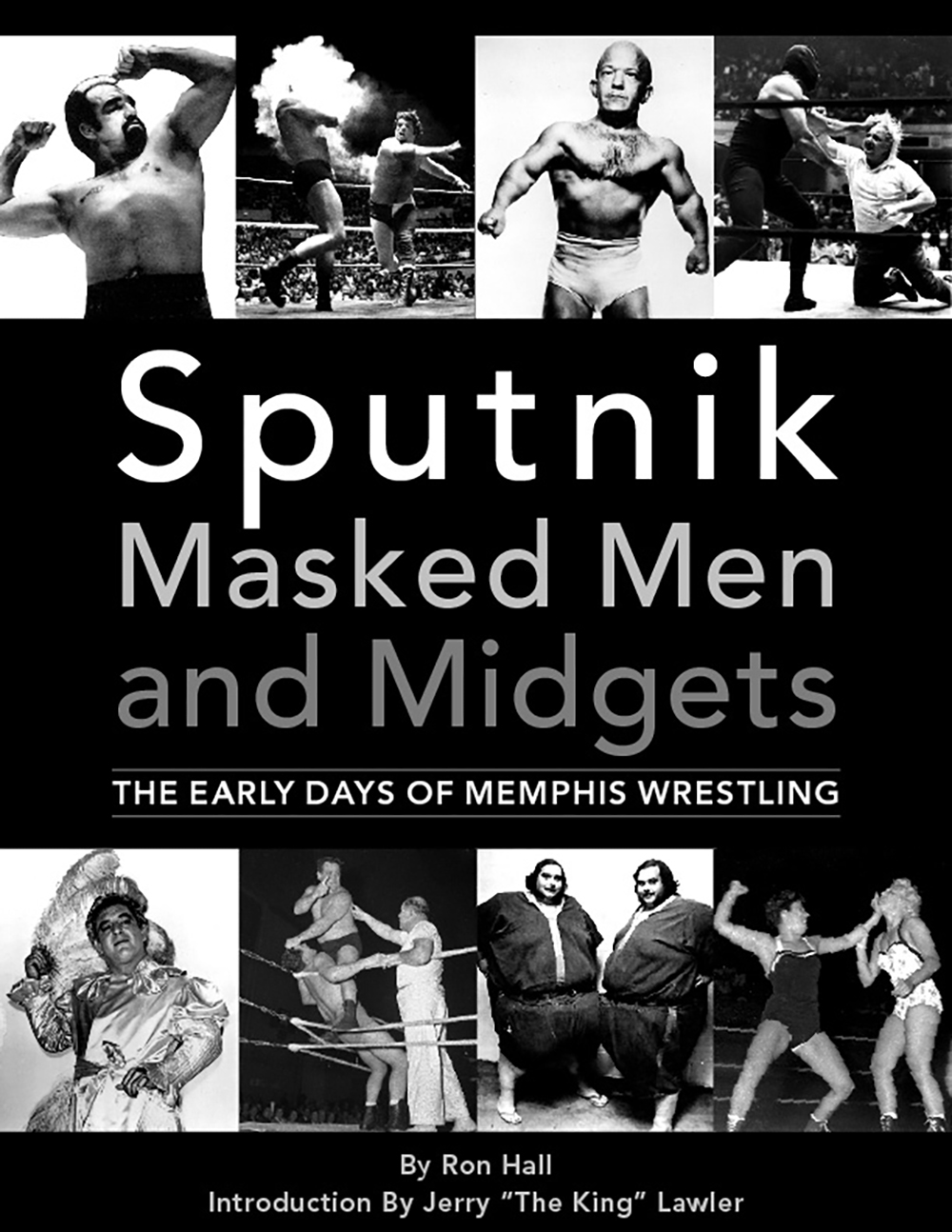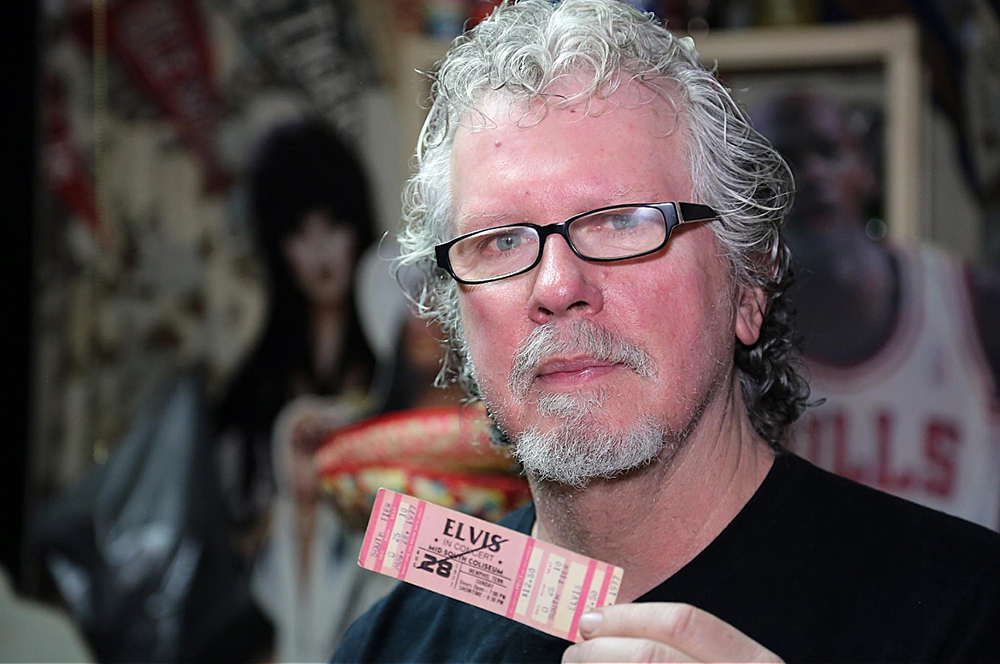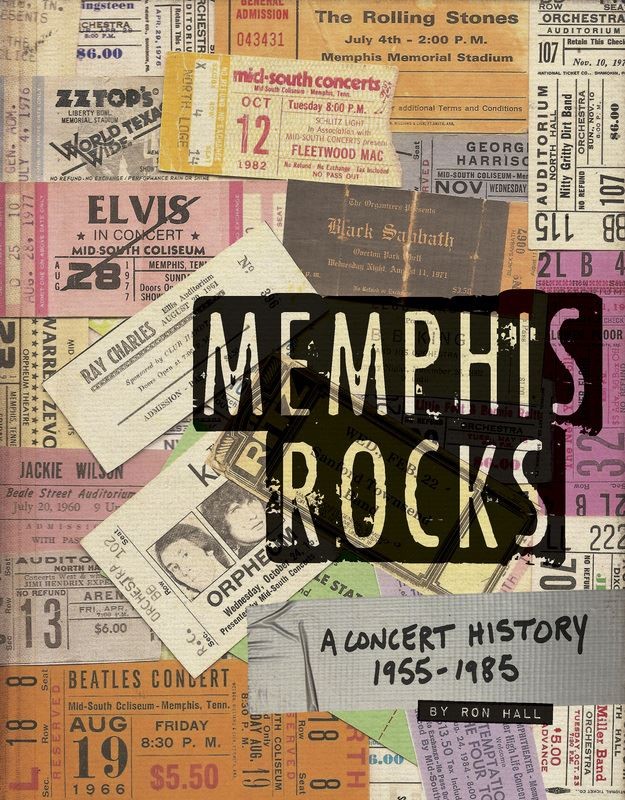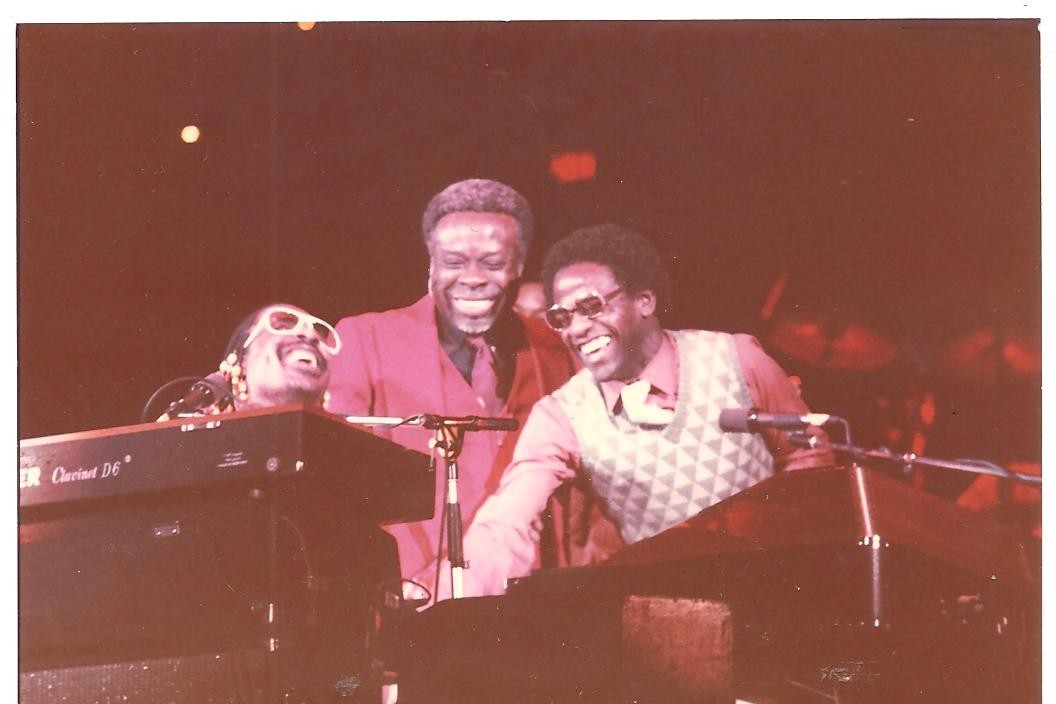There are record collectors, and then there are record collectors. Holding strong against the tides of time, which have rendered recorded music as weightless as a cloud, streaming past us like raindrops and just as ungraspable, Memphis is yet home to many mini-librarians. We curate our own collections of vinyl, tapes, and CDs, still attached to those miniature works of art and the ritual of listening that they require. Yet, among this haven of gatherers — raging, raging against the dying of the vinyl — there once walked among us the ur-collector, and the ultimate documentarian of the history behind his stacks of wax.
His name was Ron Hall. There was no one more committed to the history and lore of local music than he, and no bigger fan of Memphis wrestling.
When Hall passed away in March at the age of 73, after suffering a major stroke two months earlier, the city lost not only a gifted private archivist but a gifted author. Shangri-La Projects, who published his entire oeuvre, posted this on social media as a response to his death:
“Ron was a savant in shining a light on what it meant to grow up in the middle of the post-war pop culture explosion in one of the most influential pop culture, music, and professional wrestling cities in the world. Ron’s three books, two CD compilations, documentary film, and Memphis music calendar solidified him into being one of the craziest chroniclers/fellow fanatic travelers of all that is wacky in Memphis’ creative cauldron of the ’50s/’60s/’70s/’80s.”
Here, then, is a recap of Hall’s important body of work.
Playing for a Piece of the Door: A History of Garage and Frat Bands in Memphis, 1960-1975
This was the book that started it all, and it remains a constant reference source for this writer and many others in Memphis. Tellingly, the introduction begins with Hall’s memories of actually performing with a band, when “the 13th Muse took the stage at a home for unwed mothers in the Oakhaven area of Memphis, Tennessee,” in late 1969. Though they only played the one show, Hall recounts, “I was doing what hundreds of other kids in Memphis wished they could do.”
That everyman spirit informs this look into the stories of over 500 local bands that cropped up in the title’s 15 year span. Some went on to stardom, others were only locally celebrated, and some weren’t even that. Yet all are cataloged with an inclusive, democratic zeal by Hall, who not only collected the sometimes obscure 45s that made these bands immortal but saw many of them performing in their prime. This lends crucial historical context to the groups. Take The Embers, for instance, “one of the top bands in the Jackson/Humboldt, Tennessee, area in the mid-to-late ’60s.”
Starting in 1964, many (most?) of these groups were inspired by The Beatles. This is, after all, an undeniably partial collection of groups, centered on the largely white ensembles that sprung up in The Beatles’ wake. But Hall reaches back before the Fab Four’s heyday as well, as with his entry on The Monarchs, who, starting in 1959, were “one of the few surf bands in the area.” Hall fills out his archival research with interviews with some of the players, making this book a kind of oral history as well. “The Beatles killed us,” recalls Charles McAllister of the Monarchs.
And, as the book takes us into the ’70s, we see the post-Beatles groups flourish as well, with power pop and California rock-tinged groups like Big Star, Target, and Cargoe hitting their stride. In all, it’s one of the most important chronicles of how sounds morphed through a decade and a half of the city’s golden years at the top of the music industry.
The Memphis Garage Yearbook, 1960-1975
When Playing for a Piece of the Door came out in 2001, it sparked a new surge of demand for all that was obscure and garagey in Memphis music, and soon after Shangri-La Projects released two CDs compiling the best tracks from Hall’s and others’ vinyl collections. Concerts were held on the Shangri-La Records porch, featuring onetime ’60s artists like Jim Dickinson, B.B. Cunningham, and the Castels. Ultimately, a second book was released which covered much the same ground, but through a different lens. Put together like a high school yearbook, and relying more heavily on rare photographs and show bills collected by Hall, it’s a stunning visual accomplishment. The book being organized chronologically (rather than alphabetically, as the first book is) sheds a different light on the evolution of the groups and the various players who shuttled between them. And the live performance photos underscore that this book, as well as its predecessor, doubles as a chronicle of the era’s key venues as well as its bands.

Sputnik, Masked Men, and Midgets: The Early Days of Memphis Wrestling
Hall was not only fascinated with local music, as this 2009 volume made clear. If many, like me, first became aware of the connection between early pro wrestling in the city and rock-and-roll by reading Robert Gordon’s It Came from Memphis, Hall seems to have gotten it organically, from being a dedicated fan of the sport since his youth. Rare 45s by more sonically ambitious wrestlers like Jackie Fargo, Sputnik Monroe, and (of course) Jerry Lawler are featured in photographs and on the book’s accompanying CD. Moreover, Hall called on some key fellow collectors for the visuals here, namely Robert W. Dye Sr., a local amateur photographer; Jim Blake, owner of the record label that released Lawler’s musical ventures; and many others. The result is a galvanizing compendium of eye-gouging action shots, tough guy poses, screaming show bills, and detailed write-ups from Wrestling, King of Sports, a local wrestling rag from the era. Not long after this book appeared, Shangri-La Projects released the film Memphis Heat: The True Story of Memphis Wrasslin’, which relied heavily on this book by Hall, who also served as the film’s executive producer.

Memphis Rocks: A Concert History, 1955-1985
While retaining much of Hall’s fascination with all things Memphis, this book expands the scope of his research, documenting more than local bands. In a photo-heavy format closer to Hall’s wrestling book than Playing for a Piece of the Door, it collects concert photos, ticket stubs, show bills, and print media ads for practically any major concert in the city over a 30-year span. This includes both national and local groups, with a focus on the former: the big concerts that music fans flocked to, now cherished in the memories of those who attended. Yet smaller shows make the cut as well, and this, like Hall’s other works of music history, serves as an important chronicle of now-forgotten venues. Contrary to the subtitle, for example, the book actually begins in 1954, devoting a page to every local live performance by a certain Elvis Presley that year. Many of them were at Eagle’s Nest. Who knew?
It’s also a de facto celebration of the Mid-South Coliseum, charting the many stellar shows there over three decades, from James Brown in 1965 to The Beatles the next year to Iron Maiden in 1985. Resonating with any fan savoring the experience of such shows are the “Concert Memories” compiled by Hall, where local musicians and others recall the power of seeing pivotal performances in their lives. As such, this, like all of Hall’s painstaking works, is a compendium of not only Memphis music and Memphis memories, but key moments in the history of American culture as a whole.


